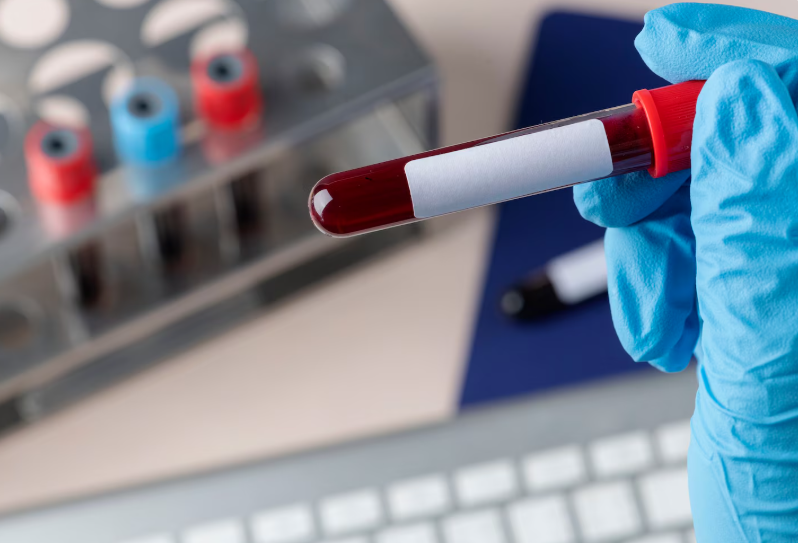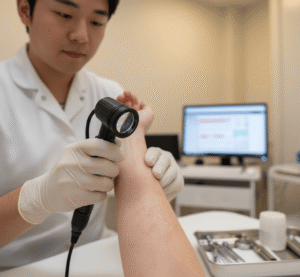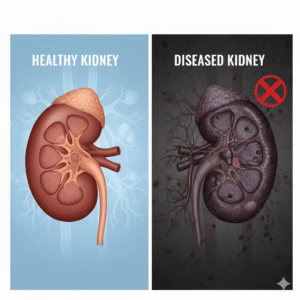Overview
Hematocrit (Hct) abnormalities refer to deviations in the proportion of red blood cells (RBCs) in the blood. Either a low hematocrit (anemia) or high hematocrit (polycythemia) can signal underlying health problems. In Korea, hematocrit levels are routinely checked during annual health screenings and diagnostic blood tests, as early detection is vital for managing cardiovascular, respiratory, and hematological conditions.
What is Hematocrit Abnormality?
Hematocrit is the percentage of red blood cells in a person’s blood. Normal levels vary by age and gender:
- Men: ~41–50%
- Women: ~36–44%
- Children: ~32–44%
Abnormalities occur when hematocrit is significantly above or below these ranges.
- Low hematocrit usually indicates anemia, bleeding, nutritional deficiency, or chronic disease.
- High hematocrit may be caused by dehydration, polycythemia vera, or chronic hypoxia (low oxygen).
Symptoms
Low Hematocrit (Anemia-related):
- Fatigue and weakness
- Pale skin
- Shortness of breath
- Dizziness or fainting
- Cold hands and feet
High Hematocrit (Polycythemia-related):
- Headaches
- Blurred vision
- Itchy skin (especially after warm baths)
- High blood pressure
- Blood clot risk
Causes
- Low Hematocrit:
- Iron deficiency
- Vitamin B12 or folate deficiency
- Chronic diseases (kidney disease, cancer)
- Blood loss (injury, menstruation, ulcers)
- High Hematocrit:
- Dehydration
- Smoking or chronic lung disease
- Living at high altitude
- Bone marrow disorders (polycythemia vera)
- Heart or lung disease causing chronic low oxygen
Risk Factors
- Poor nutrition
- Chronic illnesses (especially kidney, liver, or lung disease)
- Smoking
- Excessive alcohol intake
- Family history of blood disorders
- Living in polluted urban areas in Korea (can affect lung-related hematocrit levels)
Complications
- Low hematocrit: Severe anemia, organ dysfunction, heart failure
- High hematocrit: Increased blood viscosity, blood clots, stroke, or heart attack
- Untreated cases can lead to life-threatening cardiovascular complications
Prevention
- Maintain a balanced diet rich in iron, vitamin B12, and folate
- Regular exercise and healthy weight management
- Avoid smoking and excessive alcohol consumption
- Annual health screenings (common in Korea due to the national health check-up system)
- Early treatment of chronic diseases
Treatment Options in Korea
Diagnosis
- Complete Blood Count (CBC): Standard test to measure hematocrit levels
- Iron studies, vitamin levels, kidney/liver function tests
- Bone marrow biopsy (if hematological malignancy is suspected)
Medical Treatments
- Low Hematocrit (Anemia):
- Iron supplements (oral or IV)
- Vitamin B12 or folate injections
- Erythropoiesis-stimulating agents (used in chronic kidney disease, widely available in Korean nephrology units)
- High Hematocrit (Polycythemia):
- Phlebotomy (blood removal, common treatment at Korean hematology clinics)
- Medications to reduce blood thickness (hydroxyurea, interferon)
- Oxygen therapy for chronic lung disease patients
Lifestyle & Supportive Therapies
- Nutritional counseling (common in Korean hospitals)
- Smoking cessation programs
- Pulmonology and cardiology follow-up if hematocrit abnormalities are linked to lung or heart disease













